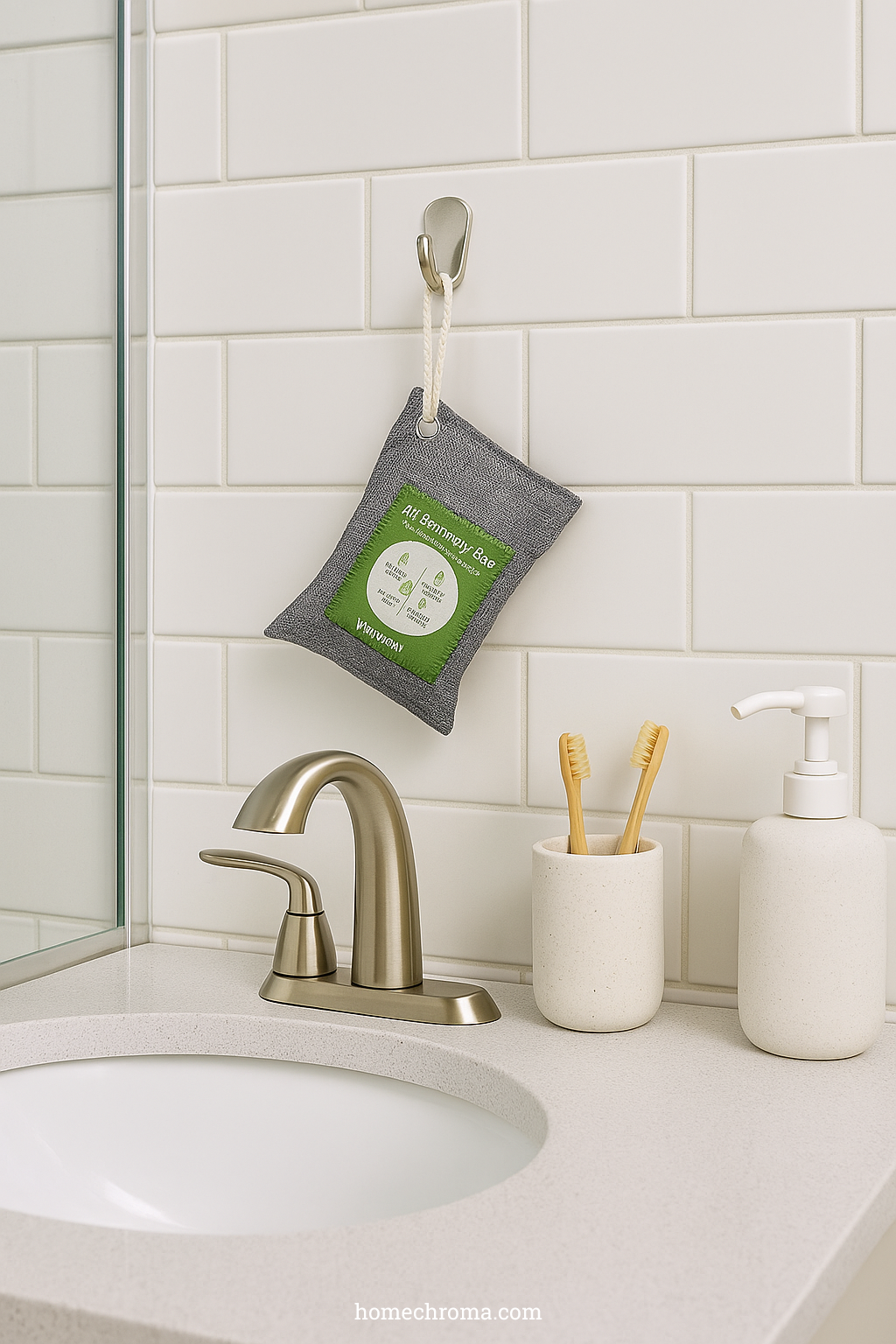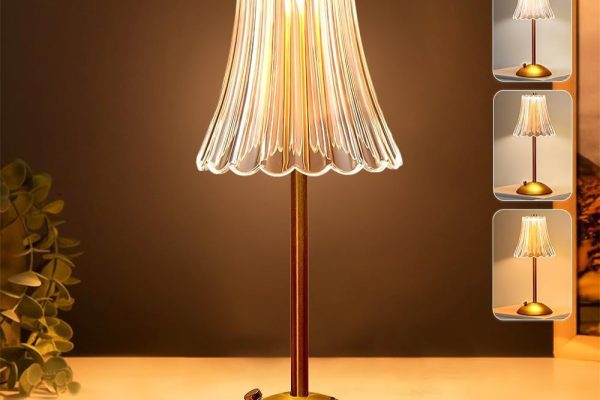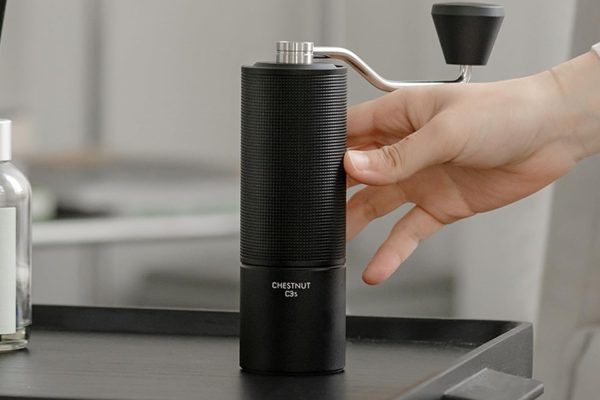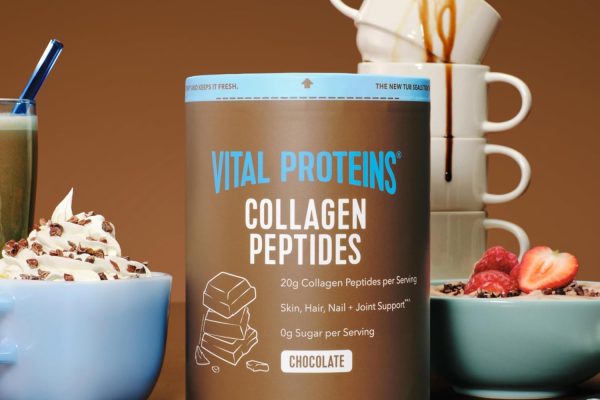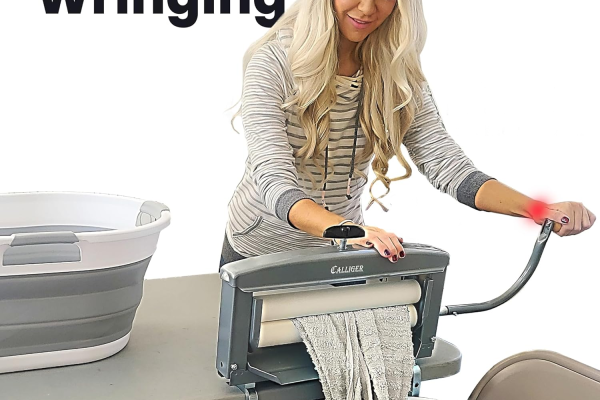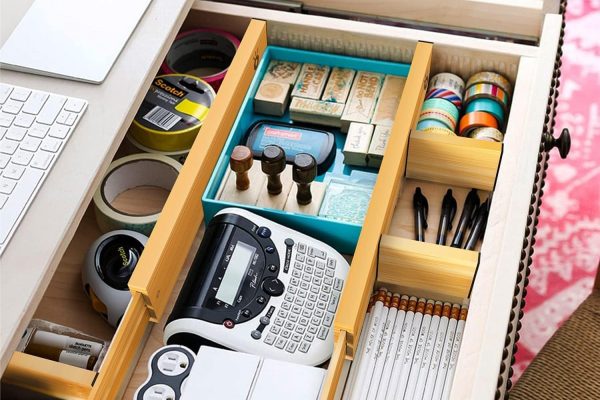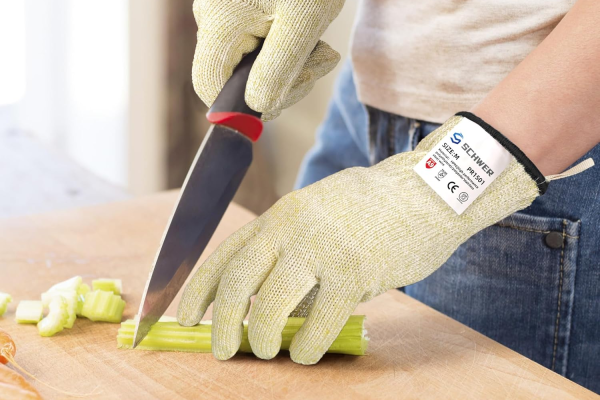Your home’s air quality affects your health every single day. Yet most people breathe indoor air that’s 2-5 times more polluted than outdoor air, filled with volatile organic compounds from furniture, cooking odors, pet smells, and moisture that breeds mold.
Traditional air fresheners don’t solve this problem—they mask odors with synthetic chemicals while adding more pollutants to your air. You need real purification, not perfumed pollution.
Bamboo charcoal air purifiers promise a natural, chemical-free solution. But do they actually work, or is this just clever marketing? Here’s the science-backed truth about what bamboo charcoal can and cannot do for your air quality.
The Science Behind Bamboo Charcoal: How It Actually Works
Bamboo charcoal isn’t just burnt bamboo—it’s a sophisticated material created through a controlled process called pyrolysis. Bamboo pieces are heated to 500°C-1200°C in oxygen-limited environments, transforming them into porous carbon structures.
The real magic happens during “activation.” This process uses steam or chemicals like potassium hydroxide to create millions of microscopic pores, dramatically increasing the surface area. Quality activated bamboo charcoal achieves approximately 1,500 m²/g of surface area—imagine a sugar cube with the surface area of a football field.
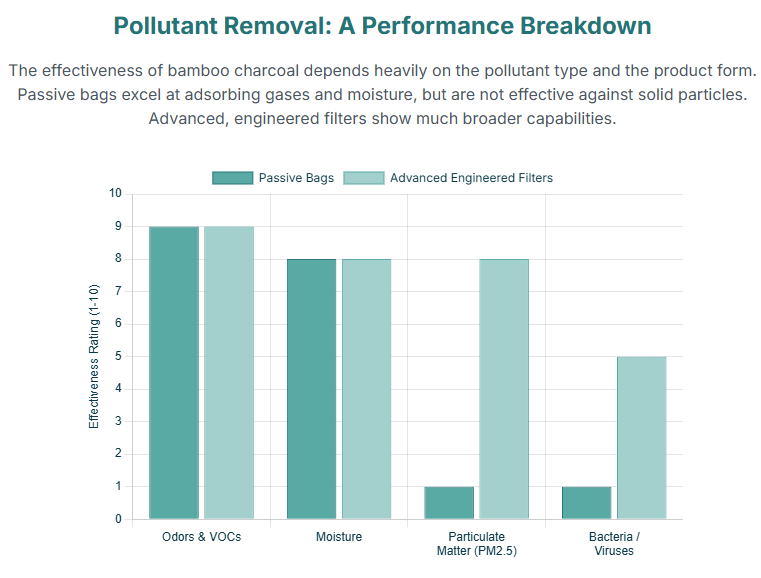
The Purification Process: Adsorption, Not Absorption
Bamboo charcoal purifies air through adsorption—pollutants stick to the carbon surface via molecular forces. This differs from absorption, where substances penetrate into a material’s bulk.
Two mechanisms drive this process:
- Physical Adsorption: Weak van der Waals forces attract pollutants to carbon surfaces (reversible)
- Chemical Adsorption: Chemical bonds form between carbon and specific contaminants (less reversible)
This porous network acts like millions of tiny traps, capturing gaseous pollutants that fit into the micropores while larger particles cannot.
What Bamboo Charcoal CAN Purify: The Strong Points
Odors: Highly Effective
Bamboo charcoal excels at removing odors rather than masking them. It effectively eliminates:
12 Pack Bamboo Air Purifying Bag [click to view…]
- Pet smells
- Smoke odors
- Cooking smells
- Musty closet odors
- Shoe and gym bag odors
- Refrigerator smells (more effective than baking soda)
Volatile Organic Compounds (VOCs): Proven Results
VOCs from paints, cleaning products, and new furniture pose serious health risks. Bamboo charcoal successfully adsorbs these harmful chemicals, reducing headaches and respiratory irritation.
Harmful Gases: Targeted Removal
Research confirms bamboo charcoal adsorbs dangerous gases including:
- Formaldehyde
- Carbon monoxide
- Nitrogen dioxide
Moisture Regulation: Dual Benefit
Activated Charcoal Bags Odor Absorber [click to view…]
Bamboo charcoal’s porous structure absorbs excess moisture, providing two benefits:
- Reduces humidity in damp spaces
- Prevents mold and mildew growth (indirect health protection)
This moisture control capability makes bamboo charcoal particularly valuable in bathrooms, basements, and closets.
What Bamboo Charcoal CANNOT Purify: Critical Limitations
Particulate Matter: Major Weakness
Standard bamboo charcoal bags have minimal effectiveness against solid particles:
- Dust
- Pollen
- Pet dander
- Mold spores
- Bacteria
- Viruses
The micropores that trap gases are too small for these larger particles to enter. Marketing claims about “trapping dust and pollen” are misleading for passive charcoal bags.
The Engineering Exception
Advanced bamboo biochar activated with potassium hydroxide and used in active air purifiers can remove up to 89% of PM2.5 particles. However, these engineered systems differ vastly from simple consumer bags.
Technology Comparison: Where Bamboo Charcoal Fits
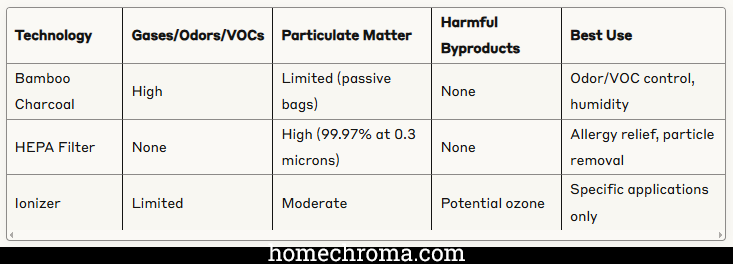
The Key Insight: No single technology handles all pollutants. HEPA filters capture particles but ignore gases. Bamboo charcoal adsorbs gases but misses particles. Comprehensive air purification requires both technologies working together.
Passive Bags vs Active Systems: Performance Gap
Passive Bamboo Charcoal Bags:
- Rely on natural air circulation
- Limited charcoal quantity
- Suitable for small, enclosed spaces
- 2-year claimed lifespan with monthly “recharging”
Active Air Purifiers with Carbon Filters:
BLUEAIR Air Purifiers [click to view…]
- Fan-forced airflow
- Larger carbon quantities
- Higher air changes per hour
- 3-6 month filter replacement typically needed
The performance difference is substantial. Active systems process exponentially more air volume, achieving significantly better purification for larger spaces and higher pollutant loads.
The “Recharging” Reality: Marketing vs Science
Many bamboo charcoal bags claim you can “recharge” them by placing them in sunlight for 1-2 hours monthly, making them “work as good as new.”
The Scientific Truth: True activated carbon regeneration requires extreme conditions—temperatures of 1700°F-1800°F (927°C-982°C) or specific chemical treatments. Sunlight may help desorb moisture and some loosely bound surface odors, but it cannot fully restore the charcoal’s capacity for tightly bound chemical pollutants.
The “good as new” claim is an oversimplification. While sunlight refreshing provides some benefit, don’t expect complete regeneration of chemical adsorption capacity.
Practical Usage Guidelines
Optimal Placement

Activated Charcoal Bags Odor Absorber [click to view…]
- Closets and storage areas
- Cars and small vehicles
- Pet areas (near litter boxes)
- Refrigerators and freezers
- Gym bags and shoes
- Bathrooms (for moisture control)
Maintenance Reality
- Replace bags every 1-2 years regardless of “recharging”
- Active carbon filters: 3-6 months replacement
- Watch for lingering odors as saturation indicator
- Charcoal saturation isn’t visually apparent—follow schedules strictly
Sizing Recommendations
- Small spaces (closets, cars): Passive bags work well
- Rooms and larger areas: Active purifiers with carbon + HEPA combination
- High pollutant environments: Professional-grade multi-stage systems
Safety and Environmental Benefits
Non-Toxic Profile
Unlike chemical air fresheners, bamboo charcoal:
- Releases no harmful byproducts
- Contains no synthetic fragrances
- Safe around children and pets
- No ozone production (unlike some ionizers)
Sustainability Advantages
12 Pack Bamboo Air Purifying Bag [click to view…]
- Made from rapidly renewable bamboo
- Biodegradable after use
- Can be composted or used as soil amendment
- Minimal environmental impact throughout lifecycle
The Bottom Line: Does Bamboo Charcoal Work?
Yes, but with important caveats:
Bamboo charcoal works excellently for specific purposes—odor removal, VOC adsorption, and moisture control. It’s a genuine air purifier for gaseous pollutants, not just an air freshener.
However, it’s not a universal solution. Passive bags cannot replace HEPA filtration for particle removal, and “recharging” claims are overstated.
Smart Usage Recommendations
For Best Results:
- Use targeted applications: Deploy bamboo charcoal bags in small spaces for odor and moisture control
- Combine technologies: Pair with HEPA filters for comprehensive purification in living areas
- Choose active systems: For larger spaces or higher pollutant loads, invest in air purifiers combining activated carbon and HEPA filtration
- Manage expectations: Understand sunlight “recharging” provides limited benefit—follow replacement schedules
- Read specifications: Higher-end activated carbon filters outperform simple bags significantly
Avoid These Mistakes:
- Don’t expect passive bags to filter airborne particles like dust or pollen
- Don’t rely solely on bamboo charcoal for allergy or asthma relief
- Don’t assume sunlight fully restores chemical adsorption capacity
- Don’t use in sealed containers where air circulation is limited
Bamboo charcoal air purifiers work—when used correctly for appropriate applications. They’re not miracle devices, but they’re valuable tools in a comprehensive air quality strategy. Understanding their specific strengths and limitations allows you to harness their benefits effectively while avoiding disappointment from unrealistic expectations.
For optimal indoor air quality, think of bamboo charcoal as one component in a multi-technology approach, not a standalone solution. When positioned correctly in your air purification strategy, bamboo charcoal delivers real, measurable benefits for healthier indoor air.
Dora Decora is a biophilic interior design specialist and passionate blogger. With a deep commitment to integrating nature into living spaces, Dora specializes in creating environments that foster human-nature connections through thoughtful design elements. Her approach emphasizes sustainable materials, natural lighting, and organic patterns that enhance wellbeing and reduce environmental impact.
This post (https://homechroma.com/bamboo-charcoal-air-purifier-does-it-work-really-purify-air) was originally published by Dora Decora on Home Chroma. As an Amazon Associates partner, we are compensated for all qualifying purchases.




